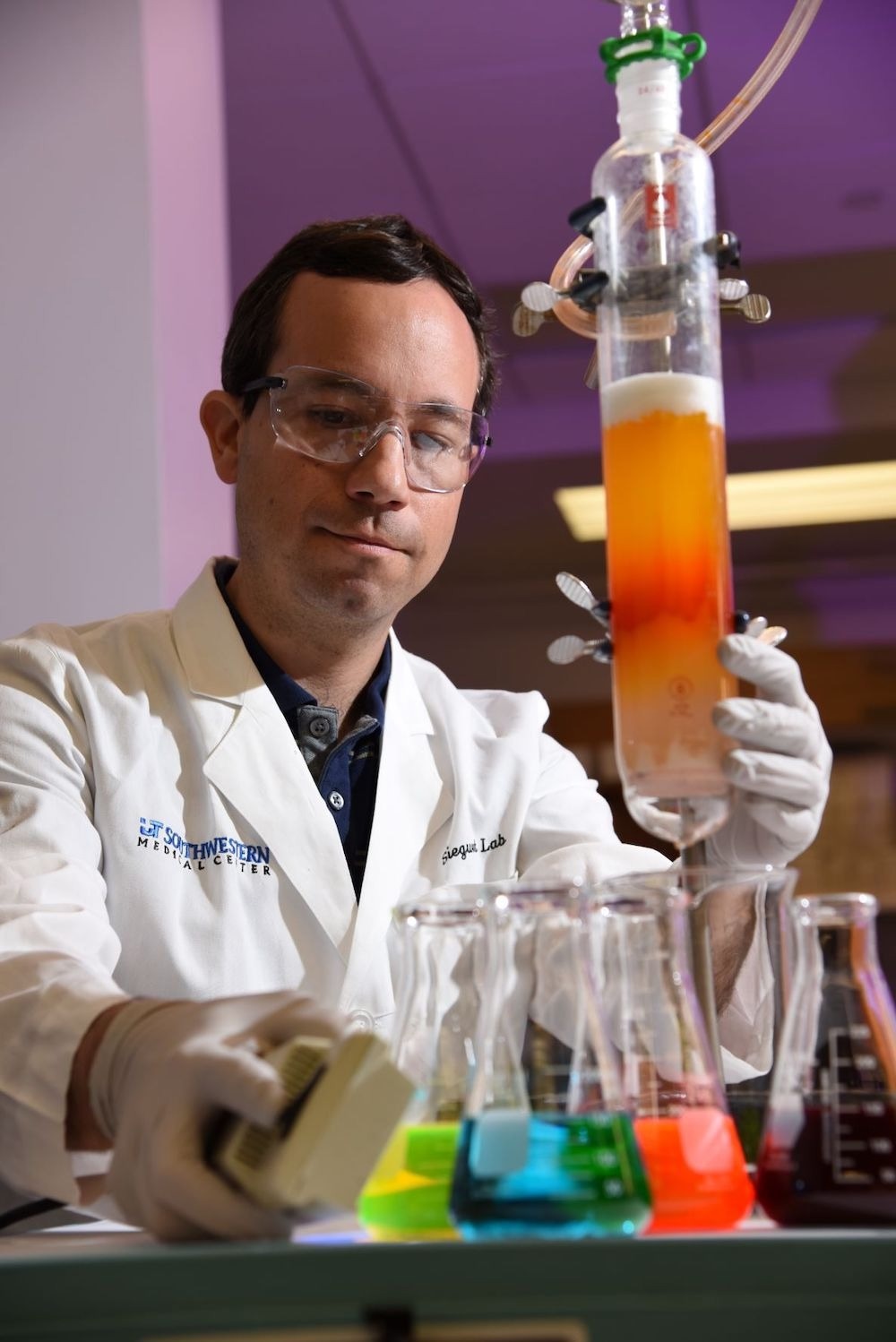Solid tumors encircle themselves with a thick, impenetrable wall of molecular defenses as they develop. It is extremely difficult to get drugs past that barricade. UT Southwestern researchers have developed nanoparticles that can penetrate the physical barriers that surround tumors and reach cancer cells.
 Daniel Siegwart, Ph.D. Image Credit: UT Southwestern Medical Center
Daniel Siegwart, Ph.D. Image Credit: UT Southwestern Medical Center
Once inside, the nanoparticles discharge their payload: a gene-editing system that changes the DNA inside the tumor, preventing it from growing and boosting the immune system.
Nature Nanotechnology reported that the new nanoparticles successfully stopped the emergence and development of ovarian and liver tumors in mice. According to study leader Daniel Siegwart, PhD., Associate Professor of Biochemistry at UT Southwestern, the system provides a new route forward for the use of the gene-editing tool known as CRISPR-Cas9 in treating cancer.
Although CRISPR offers a new approach for treating cancer, the technology has been severely hindered by the low efficiency of delivering payloads into tumors.”
Daniel Siegwart, PhD., Associate Professor, Biochemistry, UT Southwestern Medical Center
Dr Siegwart was also a member of the Harold C. Simmons Comprehensive Cancer Center.
CRISPR-Cas9 technology has recently enabled researchers to preferentially modify the DNA inside living cells. While the gene-editing system can modify genes that drive cancer growth, supplying CRISPR-Cas9 to solid tumors has proven difficult.
Dr Siegwart and his coworkers have been researching and developing lipid nanoparticles (LNPs), which are small spheres of fatty molecules that can transport molecular cargo (including recent mRNA COVID-19 vaccines) into the human body, for more than a couple of years. Dr Siegwart’s group demonstrated in 2020 how to guide nanoparticles to different tissues, which had previously been a challenging issue restricting the field.
To target cancer in the new study, the researchers started with nanoparticles that had already been optimized to move to the liver. They added a small part of RNA (called short interfering RNA or siRNA) that could turn off focal adhesion kinase (FAK), a gene that is important in keeping tumors’ physical defenses together.
Targeting FAK not only weakens the barricade around tumors and makes it easier for the nanoparticles themselves to make their way into the tumor, but also paves the way to allow immune cells in.”
Di Zhang, PhD., Study First Author and Postdoctoral Research Fellow, UT Southwestern Medical Center
The scientists encapsulated CRISPR-Cas9 machinery that could customize the gene PD-L1 within the newly engineered nanoparticles. Many cancers generate elevated amounts of the PD-L1 protein, which inhibits the immune system’s ability to attack tumors, using this gene. Researchers have previously demonstrated that in some cancers, interrupting the PD-L1 gene can release the brakes and allow a person’s immune system to destroy cancer cells.
The new nanoparticles were tested in four mouse models of ovarian and liver cancer by Drs Siegwart and Zhang and their coworkers. They first demonstrated that by inhibiting FAK with siRNA, the matrix of molecules surrounding tumors became less stiff and simpler to penetrate than usual. The researchers then examined the tumor cells and discovered that many more nanoparticles had entered the cells, successfully modifying the PD-L1 gene.
Eventually, they discovered that tumors in mice treated with nanoparticles targeting both FAK and PD-L1 shrank to approximately one-eighth the size of tumors treated only with empty nanoparticles. Furthermore, more immune cells infiltrated the tumors, and the treated mice lived roughly twice as long.
More research is needed to demonstrate the nanoparticles’ safety and effectiveness in a wide range of tumor types. According to the researchers, the therapy could be used in combination with conventional cancer immunotherapies that use the immune system to target tumors.
After the worldwide success of the COVID-19 LNP vaccines, we are all wondering what else LNPs can do. Here we developed new LNPs capable of delivering multiple kinds of genetic drugs simultaneously to improve therapeutic outcomes in cancer. There is great potential for LNP medicines to treat different kinds of diseases.”
Daniel Siegwart, PhD., Associate Professor, Biochemistry, UT Southwestern Medical Center
Source:
Journal reference:
Zhang, D., et al. (2022) Enhancing CRISPR/Cas gene editing through modulating cellular mechanical properties for cancer therapy. Nature Nanotechnology. doi.org/10.1038/s41565-022-01122-3.